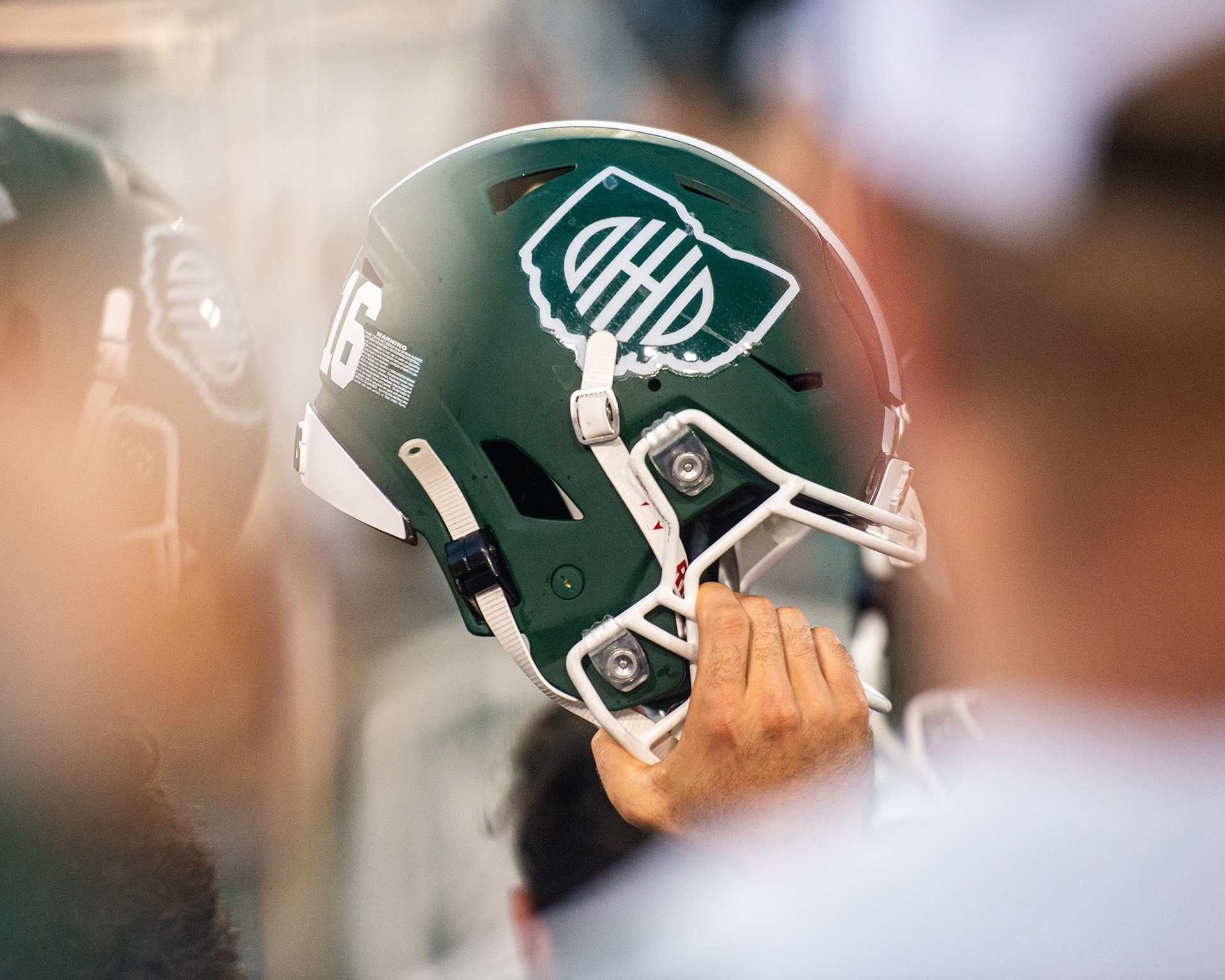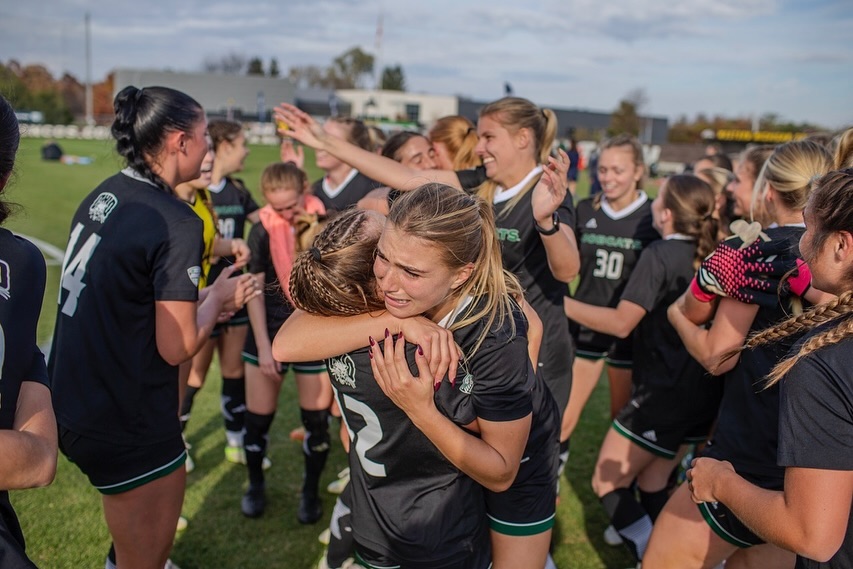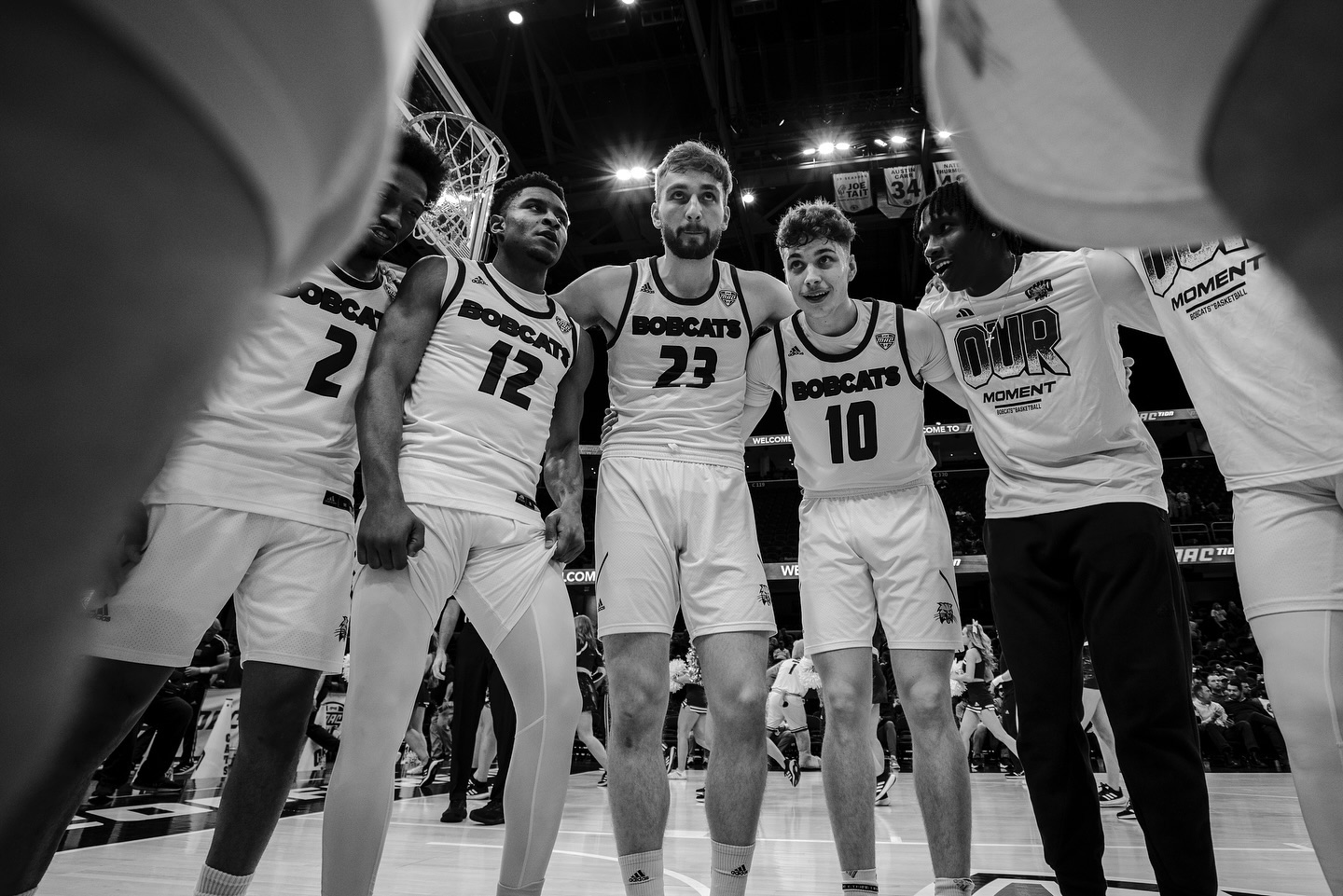
Changing the field: How digital content is revolutionizing sports
Digital content is changing the sports industry. OHIO is preparing students to change with it.
Taylor Connelly, BSJ '26 | October 14, 2024
Share:
The old aphorism that “the only constant is change” is just as true today as it was in ancient Greece, when the philosopher Heraclitus first made the observation, and perhaps nowhere more so than in the realm of digital content creation. From the constant cycle of viral trends to the ever-evolving algorithm that dictates our feeds, social media and the industries with which it’s intwined—which is to say, all of them—are anything but static.
The advent of social media has changed the sports industry in myriad ways, not the least of which being how that fans engage with their favorite teams. Through TikTok, Instagram and others, fans now can see behind the scenes to learn what is going on in their favorite player’s life, on and off the field. “Social media has opened up a way to see the personalities of players,” said Kameron Black, BSS ’18. “It’s a way to get direct access to your favorite player, favorite team or favorite coach. … To be able to get a glimpse of their lifestyle has completely changed the game.”
Black would know; since graduating with a degree in specialized studies, he has collaborated with brands ranging from Nike, the NBA, the NFL, DraftKings and FOX Sports. Recently Black began a new position at EA Sports, where he creates social media content for the Madden and College Football video games. Over the course of his nascent career, Black has watched the industry evolve from focusing on long, in-depth pieces to favor the shorter, more consumable content of today.
“Social media like TikTok, YouTube Shorts, Instagram Reels, videos under a minute, anything that can have someone’s attention in the first few seconds—that has taken over,” he said. Social media is inherently an always-on culture, particularly among younger generations, he adds, and sports content is no different. “It’s a 24-hour news cycle … [that’s] constantly updating, and it’s always changing.”

Photo courtesy Ohio Athletics
As digital content trends evolve and become more influential in the sports industry, different skill sets are needed in—or perhaps, on—the field. Over the course of his 25-year career in sports administration, Dell Robinson, BSPE ’88, has seen a dramatic shift in strategic communication and digital content creation. Like Black, Robinson noted that storytelling has shifted from longform writing to easily consumable visual graphics, photos and videos that cater to shorter attention spans.
Robinson joined OHIO this summer as director of the AECOM Center for Sports Administration in the College of Business, where he and other faculty the importance of having a finger on the pulse of social trends.
“You have to have an eye for what’s current,” he said. “You have to have an eye for emotional intelligence and connectivity to what people are reading, or mentioning, or liking.”
In the Center for Sports Administration, Robinson has been utilizing social media in the classroom to help students learn how to navigate digital content. Students have the freedom to decide what kind of storytelling they are interested in, whether it is writing, videography, graphic design or social media writ large.

Photo courtesy Ohio Athletics
Just as content trends are ever-changing, the goals behind that content have shifted, too, noted Mike Scholze, associate athletics director for digital strategies and brand development at OHIO. “Ten years ago, we used to live-tweet games,” he noted, adding that social was also used to convey key information and logistics about events. “[Today] we utilize email marketing and our website more for the information, and our social media accounts are really about brand-building and fun content.”
Scholze echoed Black’s sentiments about using social media to showcase the personalities behind the uniforms. “Telling our story is really important,” Scholze said. “We use social media to tell our student athletes’ stories. That helps them grow their brand, and it helps OHIO grow its brand.”
“OHIO is pretty unique—we're a pretty rural area in the middle of nowhere, and we have so many alumni that are engaged in Ohio Athletics,” he added. “But not everyone can make it to every game. I think it's really important to story-tell through social media to keep our fans, our donors and our alumni engaged in every way we can.”
Digital content has also allowed more creatives to get involved in the sports industry, Scholze noted. Making content, whether it is in the form of photos, videos or digital graphics, has become a crucial part of audience engagement.
“There are more opportunities than ever for creatives and for artists,” he said. “You’re blending sport and art a lot of the time, which is really, really fun to watch. … I think that’s where the next step is, storytelling and being a creative artist. It is really a new concept in sports, and it just opens up so many possibilities for different skill sets.”

Photo courtesy Ohio Athletics
At OHIO, students are encouraged to pursue interests in content creation. The Center for Sports Administration has two staff members dedicated to strategic communications and digital content—one focused on writing and the other on social media. Ohio Athletics also offers various opportunities.
“We have a really robust student content team at Ohio Athletics,” Scholze said. “We have 50 students that work for us, that are paid, and that make content for us in some capacity. They all get to be artists.”
The sports industry can be very competitive and is constantly changing, so success requires an enterprising attitude and a willingness to reach out.
“Study people and what they’ve done,” Robinson suggested. “If they’re the Big 10 director of content or digital media, what did he or she do to get there, and what can you emulate?” Offer your help, he added, calling it “one of the more magical things that you can do. … Because you gain trust and you’ve helped them, they want to help you,” he said. “Or they notice your creativity, and they actually want to get you involved and integrated with what they’re doing.”
Black agreed. While it may seem intimidating to connect with a professional who’s in your dream job, Black insisted that risk-taking is a vital component of finding a place in the often intense world of sports media.
“Don’t play it safe,” he said. “Do whatever you have to do to get your foot in the door.”
Feature photo by Eli Burris, BSJ '16
